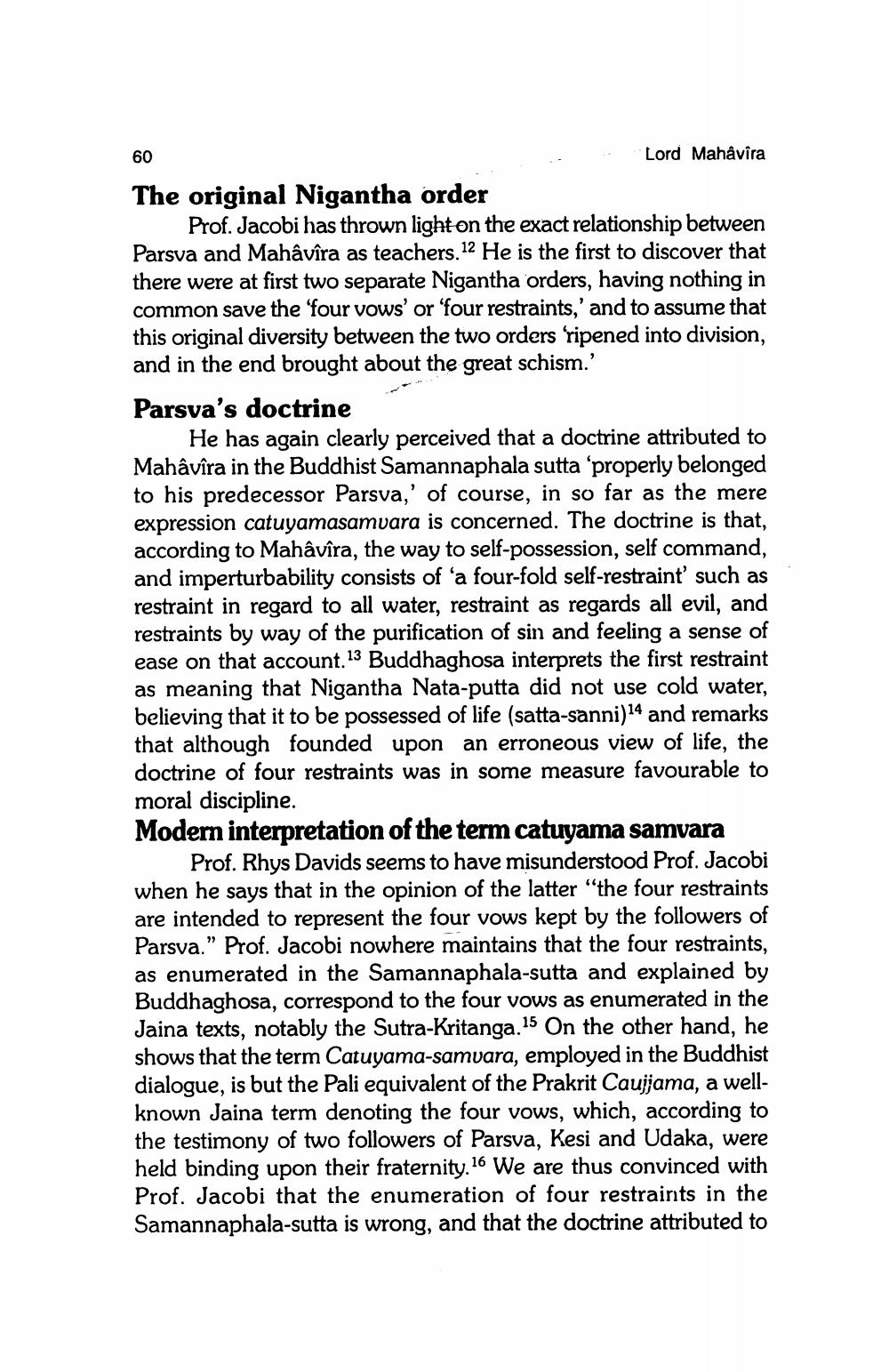________________
60
Lord Mahâvîra
The original Nigantha order
Prof. Jacobi has thrown light on the exact relationship between Parsva and Mahâvîra as teachers. 12 He is the first to discover that there were at first two separate Nigantha orders, having nothing in common save the 'four vows' or 'four restraints,' and to assume that this original diversity between the two orders 'ripened into division, and in the end brought about the great schism.'
Parsva's doctrine
He has again clearly perceived that a doctrine attributed to Mahâvîra in the Buddhist Samannaphala sutta 'properly belonged to his predecessor Parsva,' of course, in so far as the mere expression catuyamasamvara is concerned. The doctrine is that, according to Mahâvîra, the way to self-possession, self command, and imperturbability consists of 'a four-fold self-restraint' such as restraint in regard to all water, restraint as regards all evil, and restraints by way of the purification of sin and feeling a sense of ease on that account. 13 Buddhaghosa interprets the first restraint as meaning that Nigantha Nata-putta did not use cold water, believing that it to be possessed of life (satta-sanni)14 and remarks that although founded upon an erroneous view of life, the doctrine of four restraints was in some measure favourable to moral discipline.
Modern interpretation of the term catuyama samvara
Prof. Rhys Davids seems to have misunderstood Prof. Jacobi when he says that in the opinion of the latter "the four restraints are intended to represent the four vows kept by the followers of Parsva." Prof. Jacobi nowhere maintains that the four restraints, as enumerated in the Samannaphala-sutta and explained by Buddhaghosa, correspond to the four vows as enumerated in the Jaina texts, notably the Sutra-Kritanga. 15 On the other hand, he shows that the term Catuyama-samvara, employed in the Buddhist dialogue, is but the Pali equivalent of the Prakrit Caujjama, a wellknown Jaina term denoting the four vows, which, according to the testimony of two followers of Parsva, Kesi and Udaka, were held binding upon their fraternity. 16 We are thus convinced with Prof. Jacobi that the enumeration of four restraints in the Samannaphala-sutta is wrong, and that the doctrine attributed to




